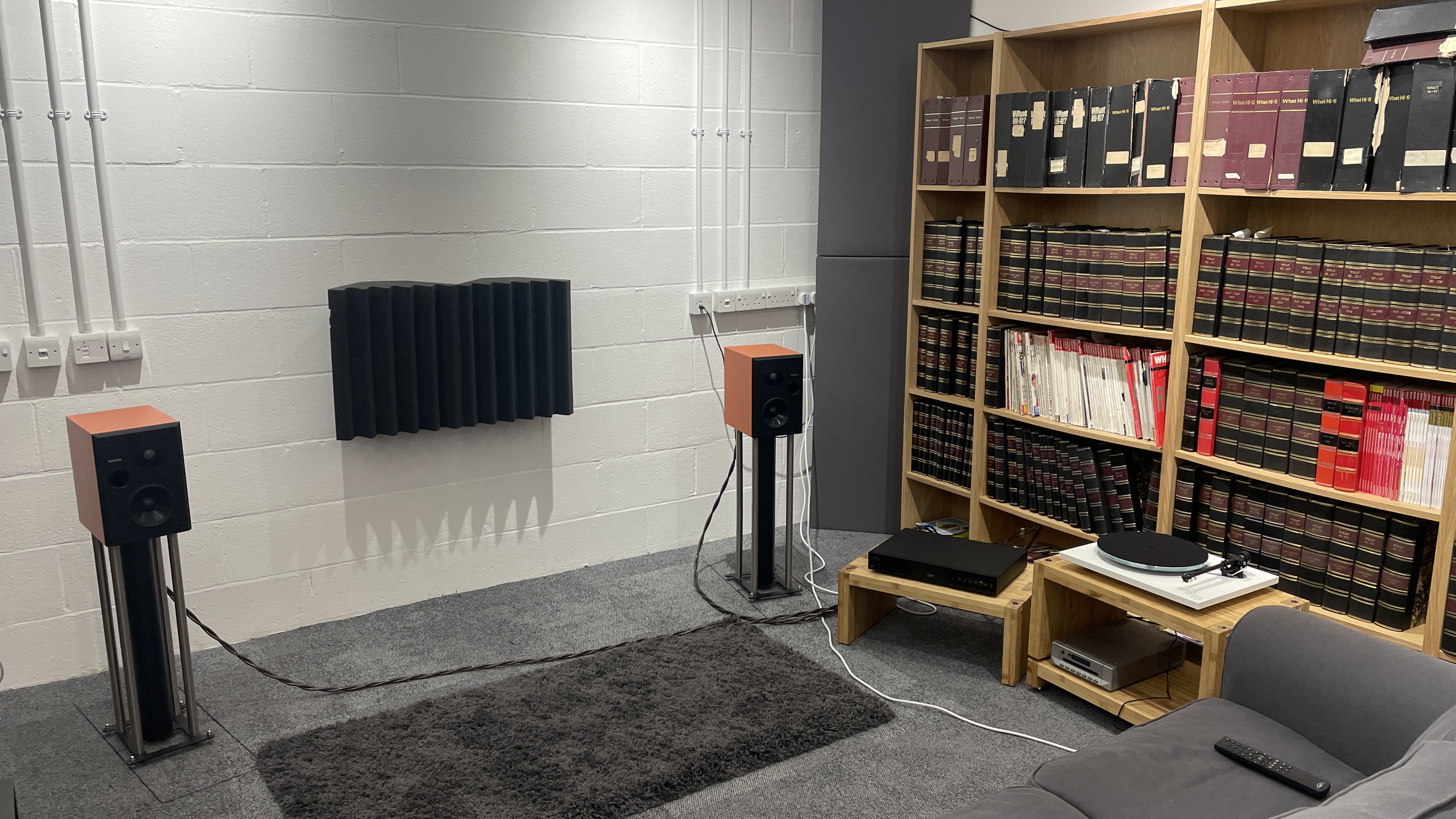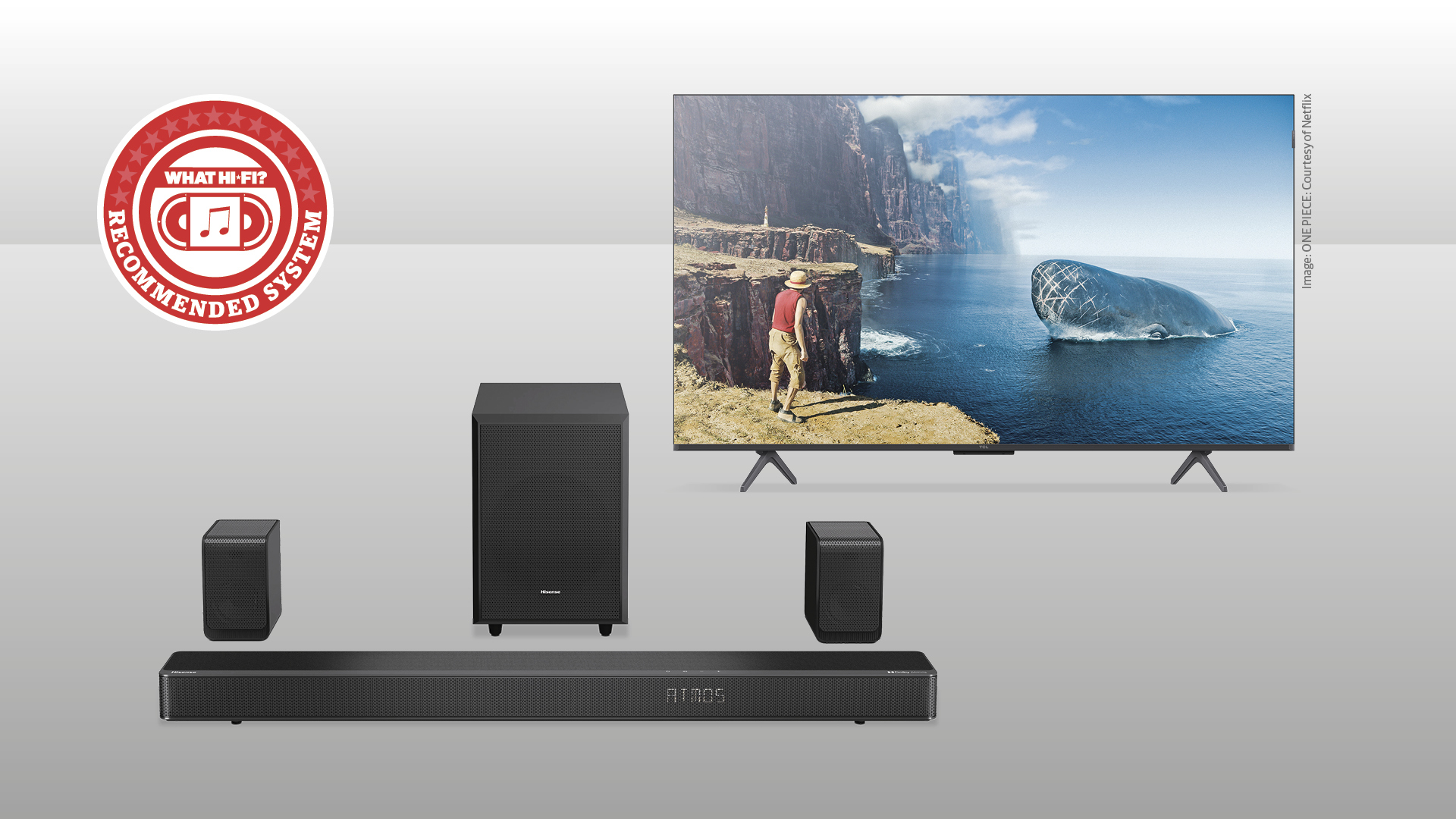How we test and review products on What Hi-Fi?
Fair, honest and accurate reviews, brought to you by the most experienced team in the business

What Hi-Fi?, founded in 1976, is the world's leading independent guide to hi-fi and home entertainment products. Our mission is and has always been for everyone to own the very best audio and video kit they can afford, so they can enjoy music and movies to their fullest.
That is why every year, and for the past 48 years, we test hundreds of products and publish comprehensive reviews to help you, our readers, buy the best tech products for your money, from speakers to TVs, turntables to headphones.
How we test
We put more AV and hi-fi kit through its paces than any other publication, and review everything from small portable speakers to large home cinema systems. If it plays audio or video, we're interested.
All products that pass through our test room doors are tested in comparison with rival products in the same price category so that everything we review is in the context of other products in that sector of the market. We keep a stockroom full of kit, meaning we always have benchmark products to hand when we need them.
All our review verdicts are agreed upon by the team as a whole – not an individual reviewer. Each product will be listened to or viewed by several members of the review team, who will then discuss the final verdict before it appears in the magazine or on the website. This ensures we reach a consensus verdict.
No manufacturer or PR is ever shown a review prior to publication, and our advertising department never knows what the test verdicts are before the review is published.
It’s how we have done things for more than 45 years, and how we plan to continue doing them for the next 45 and more – to ensure our readers are always on the receiving end of top-quality buying advice, and to uphold our unrivalled reputation in the industry.
The latest hi-fi, home cinema and tech news, reviews, buying advice and deals, direct to your inbox.
It isn't simply a 'test and forget' process either: reviews of the most relevant products – typically those that are popular and acclaimed – are updated by our reviews team when necessary. This is often to provide context on how they perform against newly emerged rivals or to test functionality that wasn't ready at launch when the product was initially reviewed. Revisiting such reviews gives readers up-to-date information on a product and its position within a market.
If you want to learn more about how What Hi-Fi? tests, you can find the reviewing process explained and discussed in the following video:
Our experienced in-house reviewers
We are the only UK-based brand to have a dedicated team of in-house reviewers, all working in the same acoustically treated test rooms. This gives us complete control over how products are tested and the environment in which they are reviewed, to ensure each product is given a fair test.
The team has more than 100 years of collective experience reviewing, testing and writing about consumer electronics. So you can rest assured that all What Hi-Fi? reviews are fair, honest and accurate, and brought to you by the most experienced team in the business.
You can learn more about us – both as a brand and as individuals – on our About Us page.
Our dedicated state-of-the-art test rooms
Aside from portable products such as wireless earbuds and on-the-go Bluetooth speakers, everything is reviewed in our three custom-built, state-of-the-art test rooms in London and Reading. There are two listening rooms for hi-fi and one dedicated to home cinema. These give us controlled and consistent environments in which to test equipment.
The two hi-fi rooms are reasonably sized, typical of the kind of spaces many readers could have. The main room is 3m x 7m x 5m (hwd) while the second room is 3m x 4m x 7m (hwd). Both rooms have been acoustically treated to have a reasonably flat reverb response over the audio frequency range. We have been careful to avoid an overdamped, studio feel to either, too, as that isn’t typical for the kinds of environments we think our readers listen to music in at home.
Every decision as regards the type and placement of the acoustic panels and bass traps has been informed by a combination of measurement and listening, with the listening usually taking priority.
Initially, we had planned to have speakers firing lengthways down our main room, as is conventional, but careful measurements showed that we would get more even results firing across the shorter dimension. This also means that we end up listening to speakers at a mid-field distance (around 2.3m) where we get more direct sound and less influence from the room. Another bonus of having the speakers fire across the shorter dimension is that the side walls are further away, which gives us the possibility of getting a wide soundstage. We want to maximise the stereo imaging of the speakers we are testing, so we have also made the test room as symmetrical as possible to optimise the results.
The second hi-fi room follows a similar philosophy but fires lengthways to allow us to listen to speakers from further away. This is useful for certain designs that need a longer distance to the listener in order to integrate properly. This is more of a multi-purpose space, with a solid brick wall behind the speakers to add greater low-end reinforcement for speakers that need it. Part of the room is devoted to desktop audio and wireless speakers where we have a table that emulates the kinds of places these products would be used in.
In order to minimise external influences we have our own dedicated test network that is separate from the one used for the rest of the office. Why is this important? An office environment with hundreds of computers and devices using the same network (and corporate firewalls) isn’t typical of what happens in a home, so a dedicated network makes sense. Conversely, we intentionally haven’t specified a separate mains feed to the room because we wanted give those components with better quality power supplies the chance to shine.
The home cinema test room follows similar principles to the hi-fi rooms but is, of course, optimised for surround speaker systems. It is decentely sized at 2.3m x 6.0 x 5.0m (hwd) and is suitable for testing some of the biggest speaker packages around. We have been fairly light with the acoustic treatment in the room with a view to getting close to the balance of a conventional living space. This room is designed so that we can test the full range of home cinema equipment from projectors, 4K video sources, soundbars and speaker packages.
Our main hi-fi test room

The main hi-fi test room is used for all separates stereo components such as CD players, turntables, amplifiers and stereo speakers. Our current hi-fi reference system includes (but is not limited to):
- Naim ND555/555 PS DR music streamer (£26,998 / $36,498)
- Naim Uniti Core music server (£2199 / $3199)
- Technics SL-1000R/Kiseki Purple Heart turntable (£21,494 / $23,619)
- Cyrus Phono Signature/PSX-R2 phono stage (£2890 / $3900)
- Burmester 088/911Mk3 pre/power amplifier (£50,600 / $68,000)
- ATC SCM50 stereo speakers (£11,950 / $16,499)
- Yamaha YH-5000SE wired headphones (£4799 / $5000)
- Analogue, digital and speaker cables from Chord Company and Vertere Acoustics
Note: during testing, products are also partnered with price-compatible kit, allowing us to gauge how they perform with the equipment with which they are most likely to be paired.
Our second hi-fi test room

This is a multi-use space where half of the room is devoted to stereo systems and the other half is used for desktop and portable audio. Our current reference system in this room includes (but is not limited to):
- Rega Planar 3/Nd3 record player (£799 / $1395 / AU$1699)
- Naim Uniti Atom Headphone Edition music streamer (£2399 / $3290 / AU$4299)
- Cyrus CDi CD player (£1499 / $2100 / AU$2499)
- Naim Nait XS3 integrated amplifier (£2499 / $2999 / AU$5299)
- Epos ES-7N stereo speakers (£1890 / $2850)
- Various cables from Chord Company
Our home cinema test room

The main home cinema room is used for testing TV and AV products such as projectors, home cinema amplifiers, Blu-ray players and soundbars. Our current reference system includes (but is not limited to):
- Sony VPL-XW5000ES projector (£5999 / $5998)
- Stewart projector screen 96-inch
- Pioneer UDP-LX500 UHD 4K Blu-ray player (£999 / $999)
- Oppo UDP-203 UHD 4K Blu-ray player (£650 / $549)
- Marantz Cinema 30 Dolby Atmos home cinema amplifier (£4000 / $4500)
- PMC Twenty5.23 surround speaker package with KEF R50 Dolby Atmos speakers (~£11,500 / $19,600)
- Chord Company cables
- Sky Q, 4K streaming and Freeview HD
Our multi-purpose home cinema room is also where we put TVs through their paces, lining two, three or sometimes even four sets next to one another for optimum comparison purposes. Tens of TVs come and go throughout the year, though we tend to keep hold of a review sample of our favourite set(s) for that all-important comparative testing.
Our star rating system

Complementing every single one of What Hi-Fi?’s reviews, whether published in the monthly magazine or on the What Hi-Fi? website, is a star-rating system with a scale of one (1) to five (5) stars. These review scores represent our opinion of the overall performance of the product and, as printed in every issue of the magazine, are as follows:
⭐️⭐️⭐️⭐️⭐️ - One of the best at the price
⭐️⭐️⭐️⭐️ - A serious contender
⭐️⭐️⭐️ - Worth a look
⭐️⭐️ - Disappointing
⭐️ - Awful
While this may seem simple enough, we have expanded on these star rating descriptions in a separate What Hi-Fi? star ratings explained article which explains the logic (and subtleties) behind the system we have been using for more than four decades.
If, however, you land on a product review on the What Hi-Fi? website that doesn't have a star rating, it will either be a clearly labelled 'hands-on review' or a review from one of What Hi-Fi?'s two sister publications in Australia.
Hands-on reviews, which will be clearly marked as such in the headline of the review, are not final product reviews. These are first impressions of a product, typically a newly launched one, and often by a single member of the team who has had the opportunity to attend a briefing or demo session ahead of the full launch.
We don't attach star ratings to these hands-on reviews because they haven't been through the full What Hi-Fi? review procedure in our test rooms. But these hands-on reviews are typically followed by a full review of that product, complete with a star rating and final verdict.
You may also see reviews that originally appeared in Australian Hi-Fi or Sound + Image magazines, What Hi-Fi?’s sister titles Down Under. Again, they will be clearly marked as such in the Author section and introduction of the review. Click here for more information about Australian Hi-Fi and Sound + Image.
What Hi-Fi? Awards

For almost 40 years, the What Hi-Fi? Awards has been the ‘Oscars’ of the hi-fi and home cinema industry; a celebration of the very best hi-fi and home cinema products on the market.
Every October, we decorate around 100 products with Best Buy awards, spread across a huge range of product categories and price points. We then pick one stand-out product in each of those categories to receive the ultimate ‘Product of the Year’ gong at the What Hi-Fi? Awards ceremony in November. It is then we also announce some special awards too, including Innovation of the Year, Outstanding Contribution and the Readers' Award, as voted for by the readers of What Hi-Fi?.
The Product of the Year and Best Buy winners represent the best-value products on the market at that time. And rest assured that we cover every corner of the market – every product that has already received a five-star review is automatically considered in the What Hi-Fi? Awards judging process, and we also give manufacturers the chance to submit brand new products especially for the Awards. Decisions on winners follow weeks of testing, discussion and debate.

Every year we also publish a special Awards issue of the magazine, with both print and digital editions going on sale on the same date as the What Hi-Fi? Awards ceremony.
So how can you find latest award-winning products? We have a dedicated What Hi-Fi? Awards website with all the latest winners, as well as those from previous years. Individual reviews of winning products are also flagged and badged as Award winners.
You will also find the best products in every category listed in our Best Buys guides, which are frequently updated throughout the year to give readers the very latest buying advice as products are announced and reviewed.
- Read our latest product reviews
- Always buy the best using our Best Buys guides
- See the latest consumer technology news
- Here is all the current What Hi-Fi? Award winners
- Read about how we test and review headphones on What Hi-Fi?
What Hi-Fi?, founded in 1976, is the world's leading independent guide to buying and owning hi-fi and home entertainment products. Our comprehensive tests help you buy the very best for your money, with our advice sections giving you step-by-step information on how to get even more from your music and movies. Everything is tested by our dedicated team of in-house reviewers in our custom-built test rooms in London, Reading and Bath. Our coveted five-star rating and Awards are recognised all over the world as the ultimate seal of approval, so you can buy with absolute confidence.

